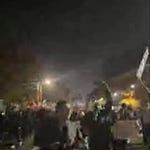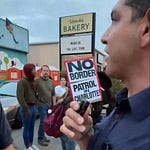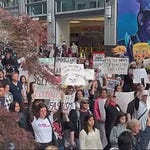As Utah students return to class, the usual back-to-school jitters are eclipsed by something darker. For Latino families, the rollback of federal protections means schools no longer guarantee safety from immigration enforcement. Teachers and students alike are bracing for a year where the fear of raids and deportations hangs over every lesson.
By Nick Valencia | August 11, 2025
SALT LAKE CITY— For most families, the first week of school brings the familiar rituals: the scramble for supplies, the awkward shuffle into new classrooms, the hope that this will be their child's best year yet. But for many Latino parents in Utah, those anxieties are braided with something far heavier: the fear that they won’t be there to greet their children when they come home, or even worse—their child wont come home at all.
Just outside Salt Lake City, one Latino family we met asked not to be named. Their 15-year-old daughter told me that if she could say one thing to President Donald Trump, it would be this: “We’re all human. God made this world for everyone. You should think about the people. Not just money and yourself.”
Her words felt older than she was, shaped by a childhood where politics isn’t background noise — it’s a shadow that can fall across the school gate.
Her mother carries her own quiet dread: that one morning’s drop-off could be the last time she sees her children, swept up in a raid maybe aimed at someone else. Late last school year, she spotted unmarked cars idling near campus, only to learn later they were immigration vehicles. It’s a detail she can’t unsee.
In January 2025, the Trump administration rescinded a Biden-era Department of Homeland Security policy that had protected “sensitive locations” — schools, hospitals, churches — from immigration enforcement. The policy had required ICE and CBP to refrain from enforcement actions in those spaces “to the fullest extent possible.” Now, agents are told to rely on “common sense,” erasing a bright-line shield around places once understood as sanctuaries. For families, the takeaway is stark: the classroom is no longer safe by definition.
Utah’s 2021 Teacher of the Year, John Arthur—who has spent 12 years at the same elementary school—says the policy shift has had a chilling effect.
“Right after that executive order came out last year, students started not coming to school,” Arthur told me. “We had to ask ourselves, are they home because they chose to stay there — or because they’ve been taken away?”
For those families, school was once a place of refuge. Now, it’s a place where they feel exposed. “Instead of their family being built up, they’re afraid their family will be broken apart,” Arthur said.
The consequences ripple beyond attendance sheets.
“I get to see the consequences of adult actions play out in the faces of children,” Arthur said. “When a kid puts their head on the desk and tells me their big brother just got deported… suddenly the district is calling them homeless. And I have to find resources to make up for the ones their family lost.”
Linda Stone understands that fear on a personal level. An immigrant from Ecuador and the senior director of Moms Rising in Utah, she is helping push for the state’s version of the Sensitive Locations Act, which would bar ICE from entering schools, churches, and hospitals without a warrant. For her, it’s not an abstract policy fight.
“know families where the mom has cancer and won’t go to her appointments because she’s afraid of being separated from her kids,” she said. “We’re hearing stories that pregnant women are not going for prenatal checks. And even having babies in their homes to avoid going to the hospitals and be detained. This is not acceptable. It’s not human. We cannot let this continue.”
Stone’s urgency comes from what she’s already seen. “We knew there was ICE presence outside some schools last semester,” she said. “We had a case where a kid hid in the bathroom because he thought when the teacher called his name, it was ICE.”
Even her own children, she added, are afraid.
Arthur says teachers have been given clear instructions: keep ICE agents outside, refuse access to student records, and call the district’s lawyers. But those procedures offer little comfort when the “correct” outcome still means a child disappears.
“If there’s a fire, I walk my students out. If there’s an earthquake, I huddle with them. If there’s an active shooter, I’m prepared to shield them with my body,” he said. “But if someone comes to take a child away, I don’t know how not to intervene. I imagine if a child is taken, I’ll be taken too — because there’s no way I’m letting them go.”
As the new school year begins, Utah’s classrooms will be full of the usual first-day hopes and worries. And for some, a different calculation — weighing risk against the need for their children to learn, hoping the odds hold.











